 716-645-4254
716-645-4254
 qinglin@buffalo.edu
qinglin@buffalo.edu
Welcome to the Lin Lab
Our research programs aim to develop and apply new chemical tools and principles to solve biomedical problems that are difficult to solve, if not impossible, using standard biological techniques alone. A central theme of our research is to harness the power of organic reactivity to study protein dynamics, function, and assembly in living systems as well as design protein-based therapeutics. We are currently working on the following two research areas:
1. Develop bioorthogonal reactions as a research tool to study protein structure, function, and dynamics in living systems.
2. Develop new orthogonal crosslinkers for the design of covalent protein-based biologics and cell-penetrating domain antibodies.
In the post-genomic era, there is an increasing desire to study the dynamics and function of biomolecules in their native environments in living cells and organisms. To this end, bioorthogonal chemistry has emerged as a general strategy for the study of biomolecular dynamics and function in living systems. Compared with the noncovalent binding-based approach, bioorthogonal chemistry relies upon a specific, covalent attachment of a probe molecule to the biomolecule of interest. Over the last two decades, our group have developed several bioorthogonal reactions, including a photoinduced tetrazole-alkene cycloaddition reaction (“photoclick” chemistry), a palladium-mediated cross-coupling reaction, and hydrazonyl sultone ligation chemistry for protein labeling in vitro and in vivo. Our current efforts are geared towards the application of bioorthogonal chemistry to understand conformational dynamics of the class B G-protein coupled receptors in living cells as well as to develop high-contrast nanobody-based immunoPET tracers without nephrotoxicity.
In contrast to a widespread adoption of covalent small-molecule inhibitors in drug design, the deployment of covalent chemistry in designing covalent protein-based biologics is still in its infancy. A major bottleneck for covalent protein drug development is a lack of suitable chemical “warheads” that can be introduced site-specifically into protein structures and subsequently undergoes selective crosslinking with the desired target out of thousands of proteins in living systems. To strike the right balance among genetic encodability, chemical stability, and target-induced reactivity, our group have designed a number of latent electrophilic amino acids over the years, including 2-aryl-5-carboxytetrazole, 2-carboxy-4-aryl-1,2,3-triazole, and b-lactam-lysine. These latent “warheads” are incorporated site-specifically into protein structures through genetic code expansion and subsequently undergo selective crosslinking reactions either upon shining of a UV light or through proximity effect upon binding to their target. We are currently exploiting the unique properties of these new chemical moieties in designing the covalent bispecific antibodies for immunotherapy as well as the orthogonally crosslinked cell-penetrating domain antibodies for cancer therapy.

Dr. Qing Lin
Professor
Principal Investigator
B.S., University of Science and Technology of China (1994)
M.S., University of Pittsburgh (1997)
Ph.D., Yale University (2000)
Damon Runyon Cancer Research Foundation Postdoctoral Fellow, The Scripps Research Institute, La Jolla, CA (2000-2003)

Balasaheb Raghunath Borade
Postdoctoral Research Associate
Joined 2023
Balasaheb, originally from Osmanabad, India, earned his Ph.D. in Chemistry in 2022 from the CSIR-National Chemical Laboratory, Pune, India. In 2023, he joined Dr. Lin’s research group, where his work focuses on the design and synthesis of bioorthogonal chemical probes to explore the conformational dynamics and signaling mechanisms of class B G protein-coupled receptors in live-cell systems.
Email: balasahe@buffalo.edu

Ming Fang
Postdoctoral Research Associate
Joined 2017
Ming came from Anhui, China. He earned his Ph.D. in Chemistry in 2023 from the University at Buffalo. He joined Dr. Lin’s research group in 2017, where his research focuses on the development and application of bioorthogonal chemistry.
Email: mfang6@buffalo.edu

Johnathan Rabb
Research Scientist
Joined 2018
John is from Buffalo, New York. He obtained his bachelor’s degree in Chemistry in 2018 from the University at Buffalo. He joined Dr. Lin’s group in 2018, and his research focuses on developing new genetically encoded unnatural amino acids that permit orthogonal crosslinking within proteins for potential therapeutic applications.
Email: jdrabb@buffalo.edu
GRADUATE STUDENTS

Zheng Wang
PhD Medicinal Chemistry Student
Joined 2021
Zheng is from Qingdao, China. She earned her Master’s degree in Medicinal Chemistry in 2018 from Ocean University of China. Since joining Dr. Lin's research group in 2021, her research has focused on the development of genetically encoded chemical motifs for precise orthogonal protein crosslinking, enabling targeted studies of protein interactions.
Email: zwang98@buffalo.edu

Sabreena Aleem Nabeela
PhD Medicinal Chemistry Student
Joined 2023
Sabreena, from Bangladesh, earned her Bachelor’s and Master’s degrees in Pharmaceutical Science from the State University of Bangladesh (SUB). Her research focuses on bacterial surface display technology and the development of new genetically encoded mutants for orthogonal protein crosslinking.
Email: sabreena@buffalo.edu
ALUMNI
Dr. LONGJUN MA, Postdoc (2023);
HEYANG ZHANG, (2021-2023);
Dr. SOPAN MAHADEV WAGALGAVE, Postdoc (2022-2023);
Dr. SRIKANTH KUMAR GANGAM, Postdoc (2019-2022);
Dr. YIFANG YANG, Postdoc (2019-2022); Lecturer, Yuncheng University, China
Dr. YALI XU, Postdoc (2019-2022); Associate Research Fellow, Shanghai Institute of Materia Medica, Chinese Academy of Sciences
JONATHAN TERRY, MS (2019-2021); Technical Application Scientist/Specialist, Thermo Fisher Scientific
Dr. RAJASEKHAR REDDY REDDY, Postdoc (2019-2021); Scientist, BMS India
Dr. ABDUR RAHIM, Postdoc (2020-2021); Postdoc, University of Minnesota
LIU LI, (2017-2019); Graduate student, West Virginia University, Morgantown, WV
HUSAN-YI WU, PhD (2013-2019); Scientist, Albany Molecular Research Inc.
Dr. PENG AN, Postdoc (2015-2018); Associate Professor, Yunnan University, China
TRACEY LEWANDOWSKI-BAIRD, PhD (2013-2018); Scientist, Thermo Fisher
Dr. YULIN TIAN, Postdoc (2015-2018); Associate Professor, Chinese Academy of Medical Sciences & Peking Union Medical College, China
CARLO P. RAMIL, PhD (2011-2017); Scientist, Merck & Co., Inc.
ALFORD ANTOINE JOHN, PhD (2012-2017); Chemist, Dalriada Therapeutics, Mississauga, ON, Canada
MARCO PAOLO JACINTO, MS (2015-2016); Graduate student, Johns Hopkins University, Baltimore, MD
DAVID SHIM, MS (2014-2016);
Dr. ANDRÁS HERNER, Postdoc (2015-2016); Research Scientist, Servier Research Institute of Medicinal Chemistry, Budapest, Hungary
Dr. ZHIPENG YU, Postdoc (2009-2015); Professor, Sichuan University, China
Dr. GANG CHENG, Postdoc (2012-2014); Lecturer, Zhejiang University, China
AVINASH MUPPIDI, PhD (2009-2014); Scientist, Eli Lilly and Company, Indianapolis, IN
REYNA KOREEN V. LIM, PhD (2007-2013); Scientist, Sorrento Therapeutics, San Diego, CA
DIFEI JIANG, MS (2011-2013); Chemist, CS Bio Co., Menlo Park, CA
Dr. NAN LI, Postdoc (2009-2012); Associate Professor, Shaanxi Normal University, China
LOK Y. HO, MS (2008-2011);
Dr. SELVAKUMAR EDWARDRAJA, Postdoc (2010-2011); Research Officer, University of Queensland, Brisbane, Australia
Dr. ZHIYONG WANG, Postdoc (2009-2010); Associate Professor, Chongqing University, China
YIZHONG WANG, PhD (2006-2010); Postdoc w/ Prof. Joseph Ready, UT Southwestern
MICHAEL M. MADDEN, PhD (2005-2010); Assistant Professor, Lake Erie College of Osteopathic Medicine, Erie, PA
WENJIAO SONG, PhD (2005-2010); Senior Scientist, Pfizer, Pearl River, NY
CLAUDIA RIVERA VERA, MS (2005-2009); Scientist, MilliporeSigma
UNDERGRADUATE RESEARCH STUDENTS
PAUL MARTELL, 2006
LINDSAY SWAYZE, 2007, PhD, Roswell Park Cancer Institute
WARREN CHOI, 2007, MD, Georgetown University
JANET HUANG, 2007
JOEL URENA, 2007, MD, SUNY Buffalo
WEN J. HU, 2008, PharmD, Albany College of Pharmacy, Albany, NY
ZHI HUI LIM, 2009
JIANLE XIE, 2009, PharmD, SUNY Buffalo
ZHEN REN, 2011
ADRIANNA DIAZ, 2012
XIWEI SUN, 2012, DAIICHI SANKYO CO., LTD., Tokyo, Japan
DANIEL ROTSHTEYN, 2012, PhD, SUNY Buffalo Chemistry
NABIHA AHSAN, 2014, MD, SUNY Buffalo
HUIXI LI, 2017-2019
THERESE WILD, 2019
BECKA KONNAYIL, 2022
LUCAS KRUSE, 2022-2024, MD, SUNY Buffalo
AVA WITTERING, 2024-2025
86. Johnathan D. Rabb, Lucas E. Kruse, and Qing Lin*
“Design of Cell-Penetrating Domain Antibodies via a GeneticallyEncoded ß-Lactam Amino Acid”
Angew. Chem. Int. Ed. 2025, e202424076
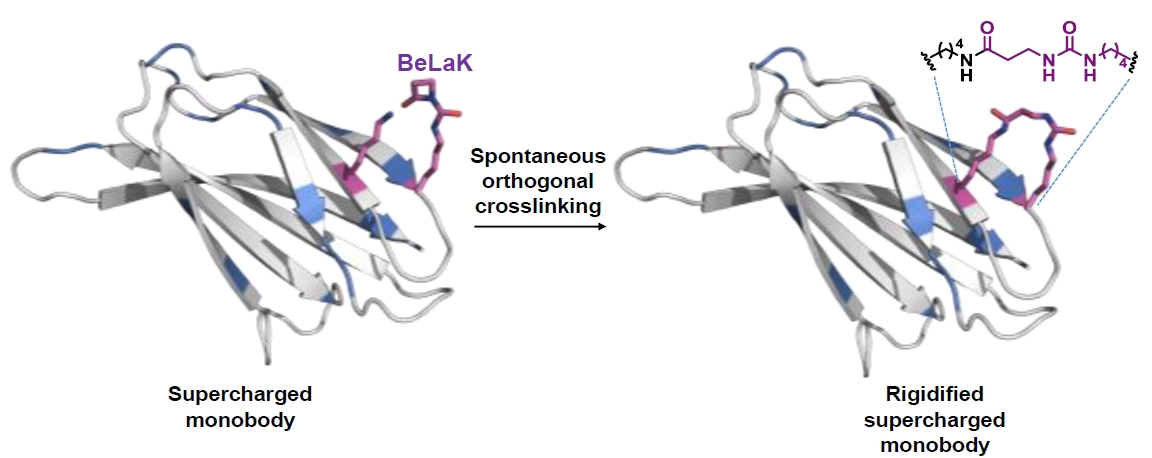
85. Balasaheb R. Borade, Ming Fang, and Qing Lin*
“Synthesis of Hydrazonyl Sultones via Phosphine-Mediated Cyclodehydration of Vicinal Sulfo-acyl Hydrazides”
Org. Lett. 2024, 26, 8239–8243

84. Heyang Zhang, Ming Fang, and Qing Lin*
“Photo-activatable Reagents for Bioorthogonal Ligation Reactions”
Top. Curr. Chem. (Z) 2024, 382, 1
83. Ming Fang, Gangam Srikanth Kumar, and Qing Lin*
“Systematic Structural Tuning Yields Hydrazonyl Sultones for Faster Bioorthogonal Protein Modification”

82. Ming Fang, Gangam Srikanth Kumar, Stefano Racioppi, Heyang Zhang, Johnathan D. Rabb, Eva Zurek, and Qing Lin*
“Hydrazonyl Sultones as Stable Tautomers of Highly Reactive Nitrile Imines for Fast Bioorthogonal Ligation Reaction”
J. Am. Chem. Soc. 2023, 145, 9959–9964

Highlighted in Chem. Eng. News, May 7, 2023. “Tautomerization ensures quality clicks”
81. Zheng Wang, Johnathan D. Rabb, and Qing Lin*
“Orthogonal Crosslinking: A Strategy to Generate Novel Protein Topology and Function”
Chem.Eur. J. 2023, 29, e2022028

80. Gangam Srikanth Kumar and Qing Lin*
“Seeking Citius: Photochemical Access of Reactive Intermediates for Faster Bioorthogonal Reactions”
ChemBioChem 2022, 23, e202200175

79. Tracey M. Lewandowski, Peng An, Carlo P. Ramil, Ming Fang, and Qing Lin*
“Dual Fluorescent Labelling of GLP-1R in Live Cells via Enzymatic Tagging and Bioorthogonal Chemistry”
RSC Chem. Biol. 2022, 3, 702–706.
78. Yifang Yang, Candy Lee, Rajasekhar Reddy Reddy, David J. Huang, Weixia Zhong, Vân T. B. Nguyen-Tran, Weijun Shen,* and Qing Lin*
“Design of Potent and Proteolytically Stable Biaryl-Stapled GLP-1R/GIPR Peptide Dual Agonists”
ACS Chem. Biol. 2022, doi: 10.1021/acschembio.2c00175

77. Yali Xu, Abdur Rahim, and Qing Lin*
“Spontaneous Orthogonal Protein Crosslinking via a Genetically Encoded 2-Carboxy-4-Aryl-1,2,3-Triazole”
Angew. Chem. Int. Ed. 2022, doi: 10.1002/anie.202202657

76. Gangam Srikanth Kumar, Stefano Racioppi, Eva Zurek, and Qing Lin*
“Superfast Tetrazole-BCN Cycloaddition Reaction for Bioorthogonal Protein Labeling on Live Cells”
J. Am. Chem. Soc. 2022, 144, 57–62.

75. Yulin Tian, Ming Fang, and Qing Lin*
“Intracellular Bioorthogonal Labeling of Glucagon Receptor via Tetrazine Ligation”
Bioorg. Med. Chem. 2021, 43, 116256.

74. Samuel Scinto, Didier Bilodeau, Robert Hincapie, Wankyu Lee, Sean Nguyen, Minghao Xu, Christopher am Ende, M.G. Finn, Kathrin Lang, Qing Lin, John Pezacki, Jennifer Prescher, Marc Robillard, and Joseph Fox*
“Bioorthogonal Chemistry”
Nature Reviews Methods Primers 2021, 1, 1-23.
73. Srikanth Kumar Gangam and Qing Lin*
“Light-Triggered Click Chemistry”
Chem. Rev. 2021, 121, 6991–7031.

72. Srikanth Kumar Gangam and Qing Lin*
“Fluorescent Bioorthogonal Labeling of Class B GPCRs in Live Cells”
Methods Enzymol. 2020, 641, 95-111.

71. Yulin Tian and Qing Lin*
“Fitness Factors for Bioorthogonal Chemical Probes”
ACS Chem. Biol. 2019, 14, 12, 2489-2496.

70. Jennifer M. Atkinson, Yansheng Ye, Melat T. Gebru, Qiang Liu, Shouhao Zhou, Megan M. Young, Yoshinori Takahashi, Qing Lin, Fang Tian,* and Hong-Gang Wang*
“Time-resolved FRET and NMR analyses reveal selective binding of peptides containing the LC3-interacting region to ATG8 family proteins”
J. Biol. Chem. 2019, 294, 14033-14042.
69. Huiqiang Li, Xiaohui Zhang, Hsuan Yi Wu, Lingyi Sun, Yongyong Ma, Junling Xu, Qing Lin, and Dexing Zeng*
“64Cu-Labeled Ubiquitin for PET Imaging of CXCR4 Expression in Mouse Breast Tumor”
ACS Omega 2019, 4, 12432-12437.
68. Andrew E. Lin and Qing Lin*
Int. J. Mol. Sci., 2019, 20, 29

67. Yulin Tian, Huafei Zou, Peng An, Zhihong Zhou, Weijun Shen,* and Qing Lin,*
“Design and Synthesis of Stapled Oxyntomodulin Analogs Containing Functionalized Biphenyl Cross-Linkers”
Tetrahedron, 2019, 75, 286-295.

66. Peng An, Hsuan-yi Wu, Tracey M. Lewandowski and Qing Lin*
“Hydrophilic azaspiroalkenes as robust bioorthogonal reporters”
Chem. Comm., 2018, 54, 14005-14008.
65. Yulin Tian and Qing Lin*
“Recent Development of Photo-Cross-Linkers as Tools for Biomedical Research”
64. Peng An and Qing Lin*
“Sterically Shielded Tetrazoles for Fluorogenic Photoclick Reaction: Tuning Cycloaddition Rate and Product Fluorescence”
Org. Biomol. Chem., 2018, 16, 5241-5244.
63. Yulin Tian and Qing Lin*
"Genetic Encoding of 2-Aryl-5-carboxytetrazole-Based Protein Photo-cross-linkers"
Chem. Commun., 2018, 54, 4449-4452.

62. Peng An, Tracey Lewandowski, Tugce Gulsen Erbay, Peng Liu, and Qing Lin*
"A sterically shielded, stabilized nitrile imine for rapid bioorthogonal protein labeling in live cells"
J. Am. Chem. Soc., 2018, 140, 4860-4868.

61. Peng An, Tracey M. Lewandowski, and Qing Lin*
"Design and Synthesis of a BODIPY-Tetrazole Based “Off-On” In-Cell Fluorescent Reporter of Hydrogen Peroxide"

60. Carlo P. Ramil , Maoqing Dong, Peng An, Tracey M. Lewandowski, Zhipeng Yu, Laurence J. Miller*, and Qing Lin*
"Spirohexene-Tetrazine Ligation Enables Bioorthogonal Labeling of Class B G Protein-Coupled Receptors in Live Cells"
J. Am. Chem. Soc., 2017, 139, 13376–13386.

59. Alford Antoine John and Qing Lin*
"Synthesis of Azobenzenes Using N-Chlorosuccinimide and 1,8-Diazabicyclo[5.4.0]undec-7-ene (DBU)"
J. Org. Chem., 2017, 82, 9873–9876.

58. Yulin Tian, Marco Paolo Jacinto, Yu Zeng, Zhipeng Yu, Jun Qu, Wenshe R. Liu, and Qing Lin*
"Genetically Encoded 2-Aryl-5-carboxytetrazoles for Site-Selective Protein Photo-Cross-Linking"
J. Am. Chem. Soc., 2017, 139, 6078–6081.

57. András Herner, Jasmina Marjanovic, Tracey M. Lewandowski, Violeta L. Marin, Melanie J Patterson, Laura Miesbauer, Damien Ready, Jon Williams, Anil Vasudevan*, and Qing Lin*
"2-Aryl-5-carboxytetrazole as a New Photoaffinity Label for Drug Target Identification"
J. Am. Chem. Soc., 2016, 138, 14609–14615.

56. Carlo P. Ramil, Peng An, Zhipeng Yu, and Qing Lin*
"Sequence-specific 2-cyanobenzothiazole ligation"
J. Am. Chem. Soc., 2016, 138, 5499–5502.

55. Avinash Muppidi, Huafei Zou, Peng Yu Yang, Elizabeth Chao, Lance Sherwood, Vanessa Nunez, Ashley K. Woods, Peter G. Schultz*, Qing Lin*, and Weijun Shen*
"Design of Potent and Proteolytically Stable Oxyntomodulin Analogs"
ACS Chem. Biol., 2016, 11, 324–328.

54. András Herner and Qing Lin*
"Photo-Triggered Click Chemistry for Biological Applications" in "Cycloadditions in Bioorthogonal Chemistry"
Top. Curr. Chem., 2016, 374, 1.
53. Alford A. John, Carlo P. Ramil, Yulin Tian, Gang Cheng and Qing Lin*
"Synthesis and Site-Specific Incorporation of Red-Shifted Azobenzene Amino Acids into Proteins"
Org. Lett., 2015, 17, 6258-6261.

52. Nan Li, Carlo P. Ramil, Reyna K.V. Lim, and Qing Lin*
"A Genetically Encoded Alkyne Directs Palladium-Mediated Protein Labeling on Live Mammalian Cell Surface"
ACS Chem. Biol., 2015, 10, 379-384.

51. Gang Cheng, Reyna K.V. Lim, Carlo P. Ramil, and Qing Lin*
"Storable N-Phenylcarbamate Palladacycles for Rapid Functionalization of An Alkyne-Encoded Protein"
Chem. Commun., 2014, 50, 11679-11682.

50. Reyna K.V. Lim, Nan Li, Carlo P. Ramil and Qing Lin*
"Fast and sequence-specific palladium-mediated cross-couping reaction identified from phage display"
ACS Chem. Biol., 2014, 9, 2139–2148.
Highlighted in Chem. Eng. News, July 28, 2014. “Phage display finds bioorthogonal chemistry”

49. Carlo P. Ramil and Qing Lin*
"Photoclick chemistry: a fluorogenic light-triggered in vivo ligation reaction"
Curr. Opin. Chem. Biol., 2014, 21, 89-95. (Review Article)

48. Avinash Muppidi, Kenichiro Doi, Carlo P. Ramil, Hong-Gang Wang, and Qing Lin*
"Synthesis of cell-permeable stapled BH3 peptide-based Mcl-1 inhibitors containing simple ary and vinylaryl cross-linkers"
Tetrahedron, 2014, 70, 7740–7745.

47. Avinash Muppidi, Hongtao Zhang, Francesca Curreli, Nan Li, Asim K. Debnath and Qing Lin*
"Design of antiviral stapled peptides containing a biphenyl cross-linker"
Bioorg. Med. Chem. Lett., 2014, 24 (7), 1748-1751.

46. Zhipeng Yu and Qing Lin*
"Design of Spiro[2.3]hex-1-ene, a Genetically Encodable Double-Strained Alkene for Superfast Photoclick Chemistry"
J. Am. Chem. Soc., 2014, 136 (11), 4153-4156.

45. Avinash Muppidi, Kenichiro Doi, Selvakumar Edwardraja, Surya V. S. R. K. Pulavarti, Thomas Szyperski, Hong-Gang Wang, and Qing Lin*
"Targeted delivery of ubiquitin-conjugated BH3 peptide-based Mcl-1 inhibitors into cancer cells"
Bioconjugate Chem., 2014, 25 (2), 424-432.

44. Zhipeng Yu, Tymish Y. Ohulchanskyy, Peng An, Paras N. Prasad, and Qing Lin*
"Fluorogenic Two-Photon-Triggered Photoclick Chemistry in Live Mammalian Cells"
J. Am. Chem. Soc., 2013, 135 (45), 16766-16769.

43. Carlo P. Ramil and Qing Lin*
"Bioorthogonal chemistry: strategies and recent developments"
Chem. Commun., 2013, 49 (94), 11007-11022. (Feature Article)

42. Peng An, Zhipeng Yu, and Qing Lin*
"Design and synthesis of laser-activatable tetrazoles for a fast and fluorogenic red-emitting 1,3-dipolar cycloaddition reaction"
Org. Lett., 2013, 15 (21), 5496-5499.

41. Peng An, Zhipeng Yu, and Qing Lin*
"Design of oligothiophene-based tetrazoles for laser-triggered photoclick chemistry in living cells"
Chem. Commun., 2013, 49, 9920-9922.

40. Gang Cheng, Reyna K.V. Lim, Nan Li, and Qing Lin*
"Storable palladacycles for selective functionalization of alkyne-containing proteins"
Chem. Commun., 2013, 49, 6809-6811.

39. Avinash Muppidi, Kenichiro Doi, Selvakumar Edwardraja, Eric J. Drake, Andrew M. Gulick, Hong-Gang Wang, and Qing Lin*
"Rational design of proteolitically stable, cell-permeable peptide-based selectice Mcl-1 inhibitors"
J. Am. Chem. Soc., 2012, 134, 14734-14737.
Recommended by Faculty of 1000 Pharmacology & Drug Discovery, September 27, 2012

38. Zhipeng Yu, Yanchao Pan, Zhiyong Wang, Jiangyun Wang*, and Qing Lin*
"Genetically Encoded Cyclopropene Directs Rapid, Photoclick Chemistry-Mediated Protein Labeling in Mammalian Cells"
Angew. Chem. Int. Ed., 2012, 51, 10600-10604.

37. Avinash Muppidi, Xiaolong Li, Jiandong Chen, and Qing Lin*
"Conjugation of Spermine Enhances Cellular Uptake of Stapled Peptide-Based Inhibitors of p53-Mdm2 Interaction"
Bioorg. Med. Chem. Lett., 2011, 21, 7412-7415.

36. Nan Li, Reyna K. V. Lim, Selvakumar Edwardraja, and Qing Lin*
"Copper-Free Sonogashira Cross-Coupling for Functionalization of Alkyne-Encoded Proteins in Aqueous Medium and in Bacterial Cells"
J. Am. Chem. Soc., 2011, 133, 15316-15319.

35. Avinash Muppidi, Zhiyong Wang, Xiaolong Li, Jiandong Chen and Qing Lin*
“Achieving Cell Penetration with Distance-Matching Cysteine Cross-Linkers: A Facile Route to Cell-Permeable Peptide Dual Inhibitors of Mdm2/Mdmx”
Chem. Commun., 2011, 47, 9396-9398.

34. Zhipeng Yu, Lok Yin Ho and Qing Lin*
“Rapid, Photoactivatable Turn-On Fluorescent Probes Based On an Intramolecular Photoclick Reaction”
J. Am. Chem. Soc., 2011, 133, 11912-11915.

33. Reyna K. V. Lim and Qing Lin*
“Photoinducible Bioorthogonal Chemistry: A Spatiotemporally Controllable Tool to Visualize and Perturb Proteins in Live Cells”
Acc. Chem. Res., 2011, 44, 828-839.

32. Zhipeng Yu, Lok Yin Ho, Zhiyong Wang and Qing Lin*
“Discovery of New Photoactivatable Diaryltetrazoles for Photoclick Chemistry via 'Scaffold Hopping'”
Bioorg. Med. Chem. Lett., 2011, 21, 5033-5036.

31. Michael M. Madden, Avinash Muppidi, Zhenyu Li, Xiaolong Li, Jiandong Chen,* and Qing Lin*
“Synthesis of Cell-Permeable Stapled Peptide Dual Inhibitors of the p53-Mdm2/Mdmx Interactions via Photoinduced Cycloaddition”
Bioorg. Med. Chem. Lett., 2011, 21, 1472-1475.

30. Wenjiao Song and Qing Lin*
“In Vitro and In Vivo Screening: Methods of High-throughput Screening”
in Protein Surface Recognition: Approaches for Drug Discovery, Giralt, E., Peczuh, M., Salvatella, X. Ed. Wiley-VCH, 2011, 251-271.
29. Zhipeng Yu, Reyna K. V. Lim, and Qing Lin*
"Synthesis of Macrocyclic Tetrazoles for a Photoinduced, Bioorthogonal 1,3-Dipolar Cycloaddition Reaction"
Chem. Eur. J., 2010, 16, 13325-13329.

28. Jiangyun Wang*, Wei Zhang, Wenjiao Song, Yizhong Wang, Zhipeng Yu, Jiasong Li, Minhao Wu, Lin Wang, Jianye Zang, and Qing Lin*
"A Biosynthetic Route to Photoclick Chemistry on Protein"
J. Am. Chem. Soc., 2010, 132, 14812-14818.

27. Reyna K. V. Lim and Qing Lin*
"Azirine Ligation: Fast and Selective Protein Conjugation via Photoinduced Azirine-Alkene Cycloaddition"
Chem. Commun., 2010, 46, 7993-7995.

26. Wenjiao Song, Yizhong Wang, Zhipeng Yu, Claudia I. Rivera Vera, Jun Qu, and Qing Lin*
"A Metabolic Alkene Reporter for Spatiotemporally Controlled Imaging of Newly Synthesized Proteins in Mammalian Cells"
ACS Chem. Biol., 2010, 5, 875-885. (Cover Article)
Evaluated by Faculty of 1000 Biology as "Must Read", October 14, 2010

25. Wenjiao Song, Zhipeng Yu, Michael M. Madden, and Qing Lin*
"A Bioorthogonal Chemistry Strategy for Probing Protein Lipidation in Live Cells"
Mol. Biosys., 2010, 6, 1576-1578.

24. Reyna K. V. Lim and Qing Lin*
"Bioorthogonal Chemistry: Recent Progress and Future Directions"
Chem. Commun., 2010, 46, 1589-1600. (Feature Article)

23. Reyna K. V. Lim and Qing Lin*
"Bioorthogonal Chemistry: A Covalent Strategy for the Study of Biological Systems"
Science China: Chemistry, 2010, 53, 61-70.

22. Shao-Liang Zheng, Yizhong Wang, Zhipeng Yu, Qing Lin*, and Philip Coppens
"Direct Observation of a Photoinduced Nonstabilized Nitrile Imine Structure in the Solid State"
J. Am. Chem. Soc., 2009, 131, 18036-18037.

21. Michael M. Madden, Claudia I. Rivera Vera, Wenjiao Song, and Qing Lin*
"Facile Synthesis of Stapled, Structurally Reinforced Peptide Helices via A Photoinduced Intramolecular 1,3-Dipolar Cycloaddition Reaction"
Chem. Commun., 2009, 5588-5590.

20. Yizhong Wang and Qing Lin*
"Synthesis and Evaluation of Photoreactive Tetrazole Amino Acids"

19. Yizhong Wang, Wenjiao Song, Wen J. Hu, and Qing Lin*
"Fast Alkene Functionalization In Vivo by Photoclick Chemistry: HOMO-Lifting of Nitrile Imine Dipoles"
Angew. Chem. Int. Ed., 2009, 48, 5330-5333.
Highlighted in Nature Chemical Biology , August 2009 issue.

18. Qing Lin*, and Reyna K. V. Lim
"Traceless Native Protein Labeling In Mice"
Nat. Chem. Biol., 2009, 5, 275-276. (News & Views Article)

17. Yizhong Wang , Wen J. Hu , Wenjiao Song , Reyna K. V. Lim and Qing Lin*
"Discovery of Long-Wavelength Photoactivatable Diaryltetrazoles for Bioorthogonal 1,3-Dipolar Cycloaddition Reactions"
Org. Lett., 2008, 10 (17), pp 3725–3728.

16. Wenjiao Song, Yizhong Wang, Jun Qu, and Qing Lin*
"Selective Functionalization of a Genetically Encoded Alkene-Containing Protein via “Photoclick Chemistry” in Bacterial Cells"
J. Am. Chem. Soc., 2008, 130, 9654-9655.
Featured in C&EN Science & Technology Concentrates, July 14 Issue.
Highlighted in ACS Chemical Biology Spotlight, September 15 issue.
Highlighted in Angew. Chem. Int. Ed. 2009, 48, 1729-1731.

15. Wenjiao Song, Yizhong Wang, Jun Qu, Michael M. Madden, and Qing Lin*
"A Photoinducible 1,3-Dipolar Cycloaddition Reaction for Rapid, Selective Modification of Tetrazole-Containing Proteins"
Angew. Chem. Int. Ed., 2008, 47, 2832-2835.
Recommended by Faculty of 1000 Biology, March 25, 2008.
Highlighted in Angew. Chem. Int. Ed. 2009, 48, 1729-1731.

14. Michael M. Madden, Wenjiao Song, Paul G. Martell, Yong Ren, Jian Feng, and Qing Lin*
"Substrate Properties of Ubiquitin Carboxyl-Terminally Derived Peptide Probes for Protein Ubiquitination"
Biochemistry, 2008, 47, 3636-3644.

13. Yizhong Wang, Claudia Rivera Vera, and Qing Lin*
"Convenient Synthesis of Highly Functionalized Pyrazolines via Mild, Photoactivated 1,3-Dipolar Cycloaddition"
Org. Lett., 2007, 9, 4155-4158.

12. Jiazhi Sun, Michelle Blaskovich, Rishi K. Jain, Frederic L. Delarue, Daniel Paris, Steven Brem, Marguerite Wotocezk-Obadia, Qing Lin, Domenico Coppola, Kihang Choi, Michael Mullan, Andrew D. Hamilton and Saïd M. Sebti
"Blocking Angiogenesis and Tumorigenesis with GFA-116, a Synthetic Molecule that Inhibits Binding of Vascular Endothelial Growth Factor to its Receptor"
Cancer Res., 2004, 64, 3586-3592.
11. Qing Lin, Carlos F. Barbas III and Peter G. Schultz*
"Small Molecule Switches for Zinc Finger Transcription Factors"
J. Am. Chem. Soc., 2003, 125, 612-613.
10. Qing Lin and Andrew D. Hamilton*
"Design and synthesis of multiple-loop receptors based on a calix[4]arene scaffold for protein surface recognition"
C. R. Chimie, 2002, 5, 441-450.
9. Hyung Soon Park, Qing Lin, and Andrew D. Hamilton*
"Modulation of protein–protein interactions by synthetic receptors: Design of molecules that disrupt serine protease–proteinaceous inhibitor interaction"
8. Qing Lin, Fanyi Jiang, Peter G. Schultz* and Nathanael Gray*
"Design of Allele-Specific Protein Methyltransferase Inhibitors"
J. Am. Chem. Soc., 2001, 123, 11608-11613.
7. Yen Wei*, George L. McLendon*, Andrew D. Hamilton*, Martin A. Case, Cherie B. Purring, Qing Lin, Hyung Soon Park, Chang-Sun Lee and Tianning Yu
"Disruption of Protein-Protein Interactions: Design of A Synthetic Receptor that Blocks the Binding of Cytochrome c to Cytochrome c Peroxidase"
Chem. Commun., 2001, 1580-1581.
6. Michelle Blaskovich, Qing Lin, Frederic L. Delarue, Jiazhi Sun, Domenico Coppola, Hyung Soon Park, Andrew D. Hamilton and Saïd M. Sebti
"Design of GFB-111 a Platelet-Derived Growth Factor Binding Molecule with Anti-Angiogenic and Anti-Cancer Activity Against Human Tumors in Mice"
Nature Biotechnol., 2000, 18, 1065-1070.
5. Hyung Soon Park, Qing Lin and Andrew D. Hamilton*
"Protein Surface Recognition by Synthetic Receptors: A Route to Novel Sub-micromolar Inhibitors for α-Chymotrypsin"
J. Am. Chem. Soc., 1999, 121, 8-13.
4. Qing Lin, Hyung Soon Park, Yoshitomo Hamuro, and Andrew D. Hamilton*
"Protein Surface Recognition by Synthetic Receptors"
3. Andrew D. Hamilton, Hyung Soon Park, Qing Lin and Rishi Jain
"Towards Artificial Antibodies: Protein Surface Recognition by Synthetic Receptors"
2. Qing Lin, Hyung Soon Park, Yoshitomo Hamuro, Chang-Sun Lee and Andrew D. Hamilton*
"Protein surface recognition by synthetic agents: Design and structural requirements of a family of artificial receptors that bind to cytochrome C"
Biopolymers (Peptide Science), 1998, 47, 285-297.
1. Qing Lin, Steven J. Geib and Andrew D. Hamilton*
"1-Phenyl-1H-pyrrole-2,5-dicarboxylic acid derivatives asversatile hydrogen-bonding motifs for the formation of one-, two- andthree-dimensional networks in the solid state"
J. Chem. Soc., Perkin Trans. 2, 1998, 2109-2116.






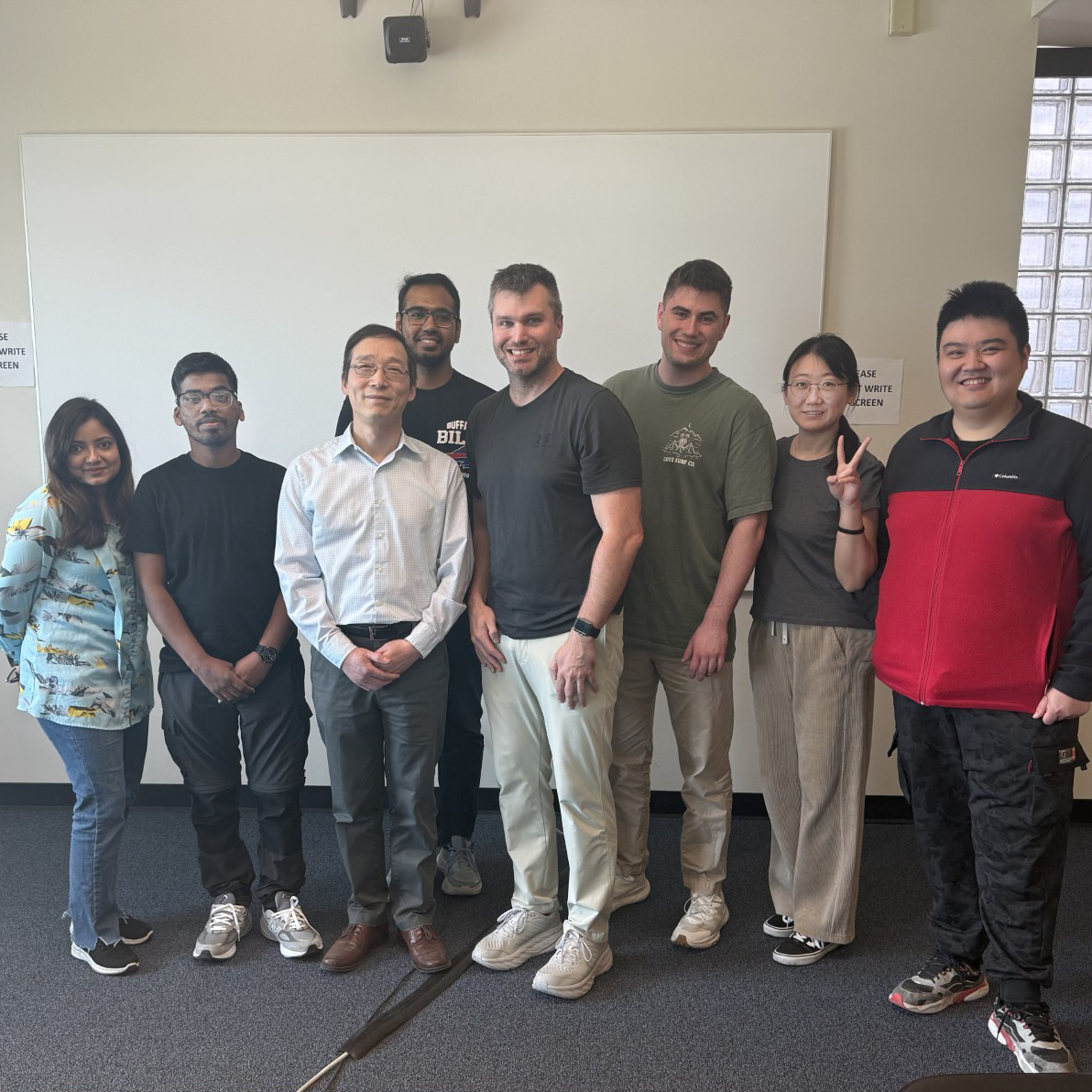
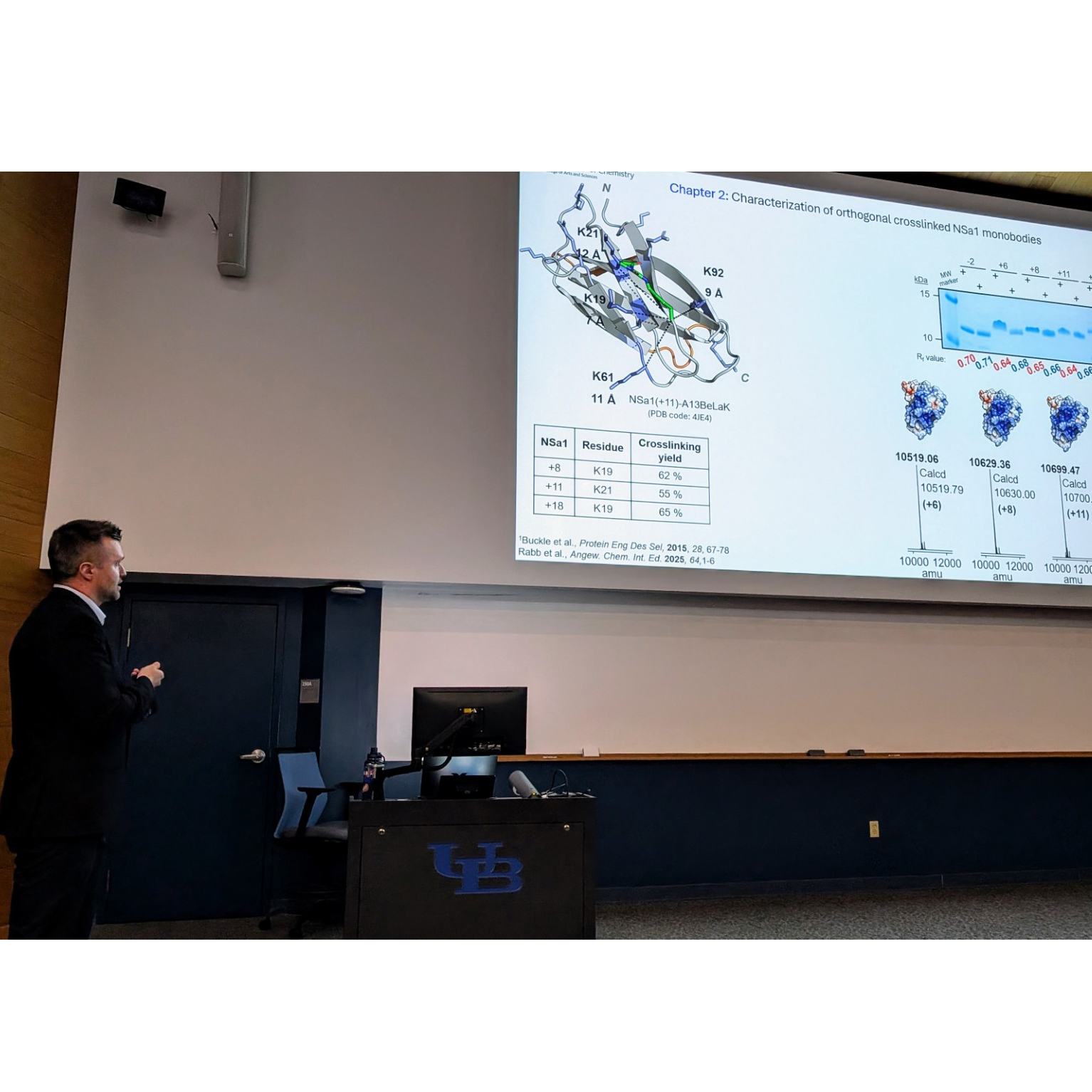
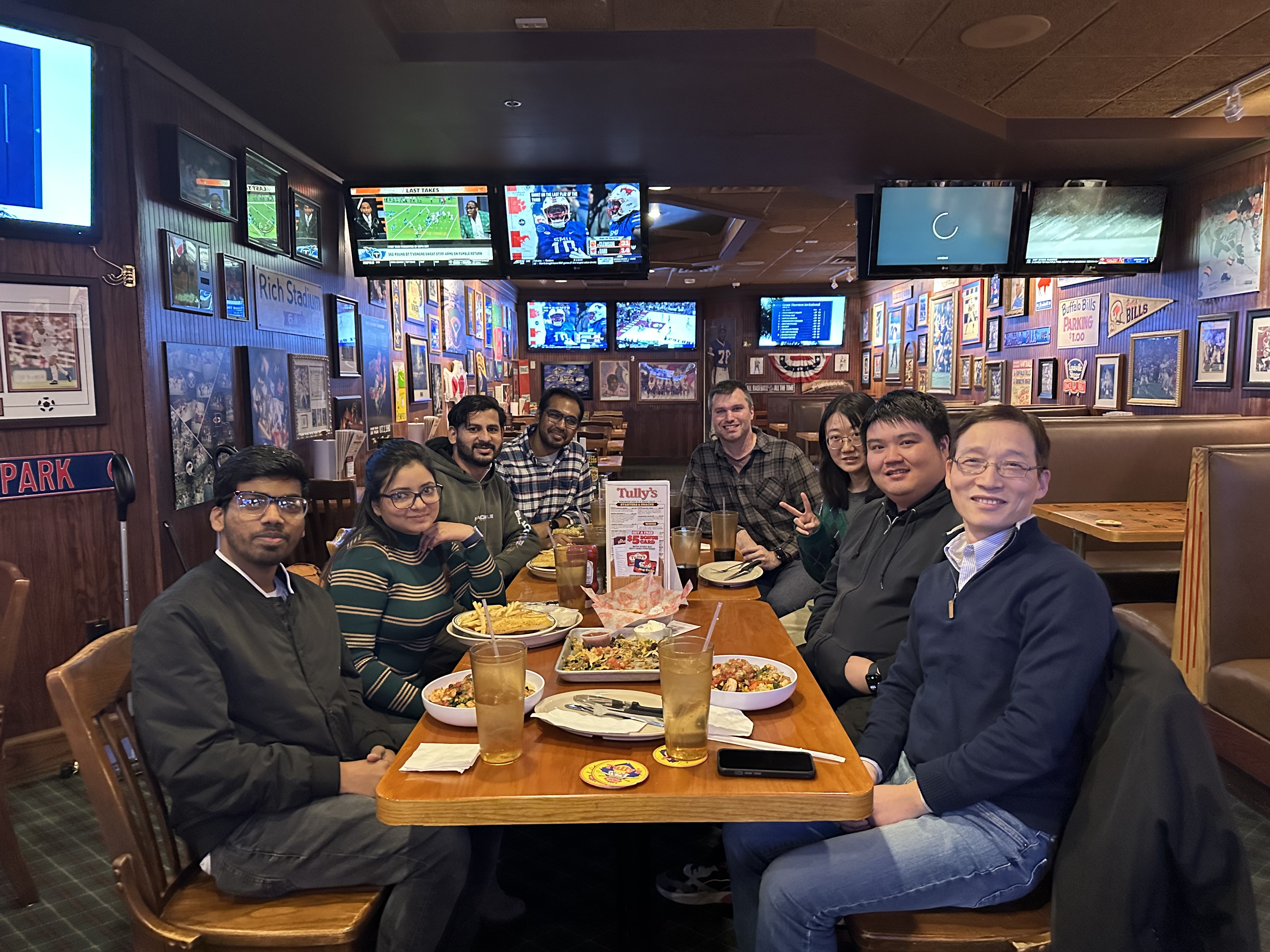
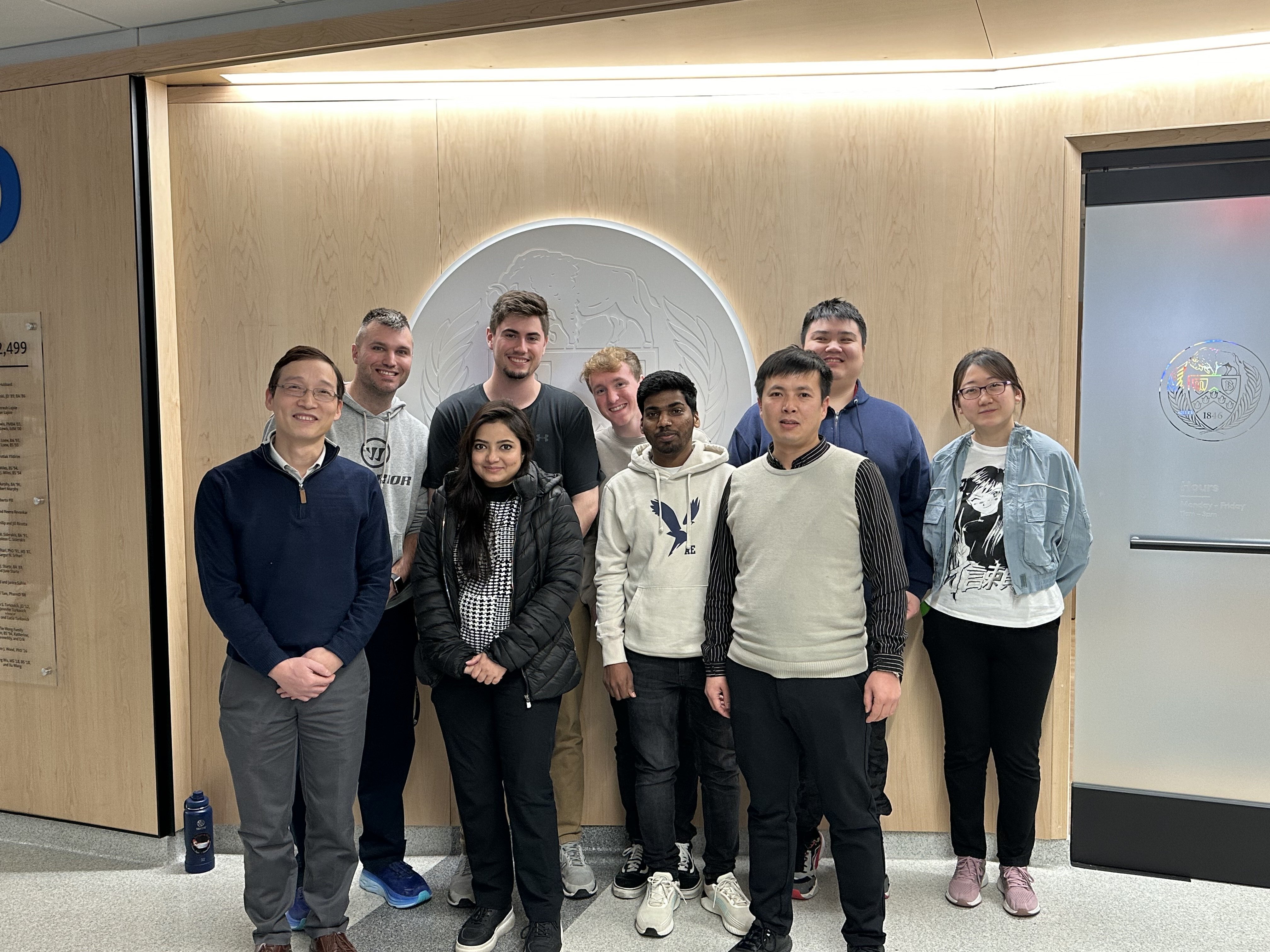
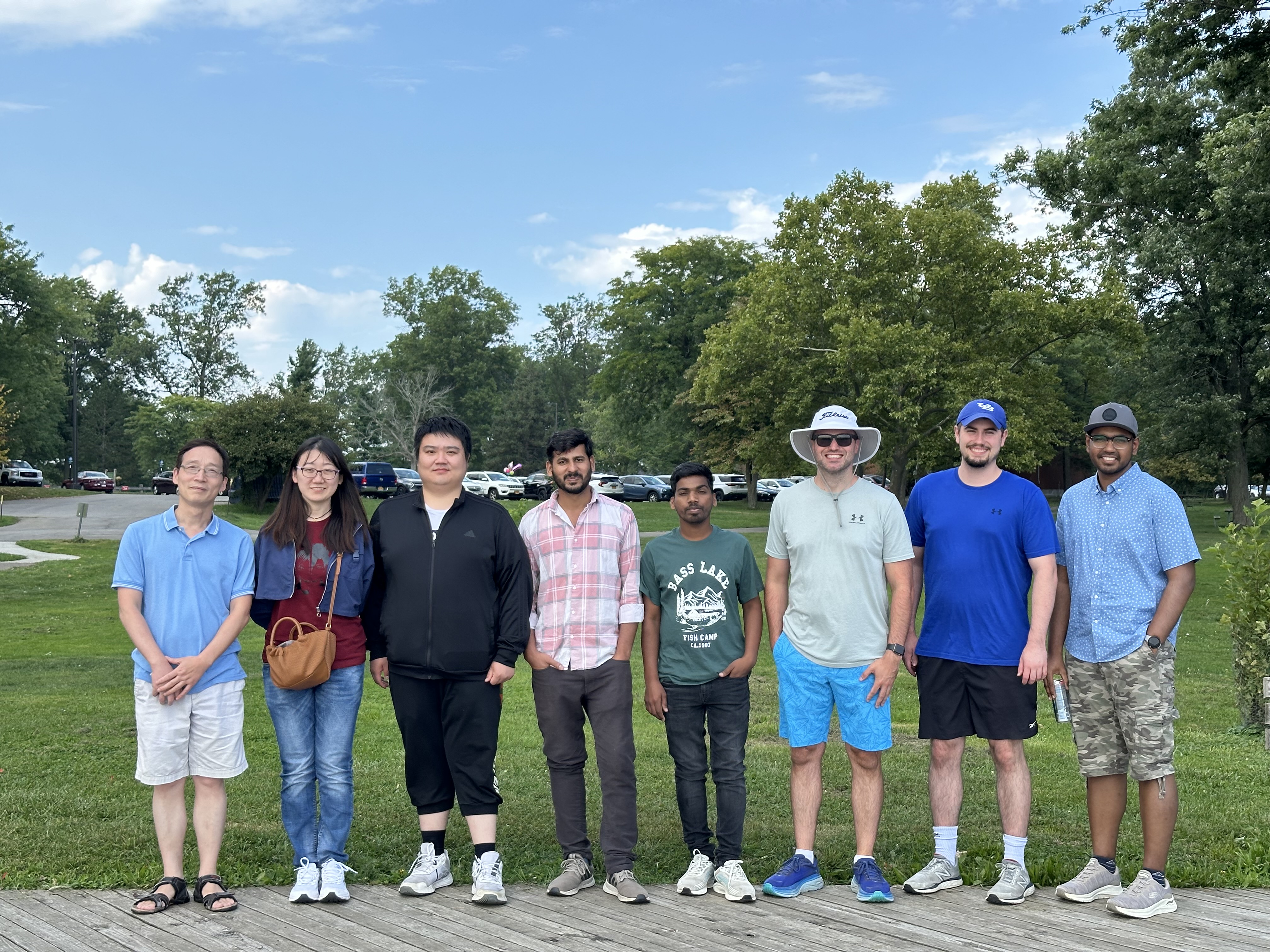


 679 Natural Sciences Complex, Department of Chemistry, University at Buffalo, Buffalo NY 14260
679 Natural Sciences Complex, Department of Chemistry, University at Buffalo, Buffalo NY 14260
 (716) 645-4254 Fax: (716) 645-6963
(716) 645-4254 Fax: (716) 645-6963